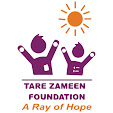Children of a
society are the future of the society. It is therefore necessary to protect the
children from various exploitation. Child abuse has become prevalent in the
Indian society and has increased drastically since the last decades. Child
abuse can be in any form – physical, emotional, sexual or neglect. It is
important to make the children as well the society aware about the causes and
effects of child abuse. To counter this problem of child abuse, there are
various laws and acts in India that cat as protective cove for the children.
The constitution of India has the provisions to ensure the development,
protection and empowerment of children. There are multiple provisions that
impose the primary responsibility of the state to promote welfare of the
children. Following are the laws, acts and provision that help in doing so.
Fundamental Rights:
-
1. Article 14
which ensures that man, woman and child are equal before law
2. Article 15
that provides for prohibition of discrimination along with empowering the state
to make special provisions for children and women
3. Article 21A
which makes its mandatory to provide free and compulsory education to children
in age group of 6 t o14 years.
4. Article 23
that prohibits human trafficking and forced labour
5. Article 24
that prohibits child labour or employment of children under the age of 14 in
hazardous work surroundings
Directive
Principles of State Policy: -
1. Article 39(e)
that asks the State to ensure the health of workers, men and women and the
children are not abused
2. Article 39(f)
that asks the State to ensure that children are provided with opportunities and
facilities to develop and are protected against exploitation and against
abandonment.
3. Article 45
that asks the State to ensure early childhood care and education for all
children until the age of six years
Other
Provisions
1. Article
51A-(k) that has fundamental duty of parents or guardians to provide
opportunities for education to their child/ward between the age of 6 and 14
years
There are also
various acts and amendment that enhance the rights and protect the children
form abuse and help them grow in a healthy environment. They are as follows: -
1. Protection of
Child Rights Act, 2005 led to the setting up of the National Commission for
Protection of Child Rights in the year 2007. It works for preserving the rights
of children, spreading awareness against child abuse and providing proper
redressal to the victims.
2. Prohibition of Child Marriage Act, 2006 which prevents
child marriage; it defines a child as a male below 21 years and a female below
18 years.
3.
Protection of
Children from Sexual Offences Act 2012 is a special law to deal with cases of
child abuse, sexual assault, sexual harassment and related offences. The POCSO
cell has been set up to monitor it’s working.
The
government and judiciary of India are trying their best to bring this child
abuse to an end, but unless and until the society does not understand the
effect that abuse has over children, it will be difficult to bring it under
control. It is up to the citizens to keep any look out for the safety of the
children and report any atrocities.






0 Comments